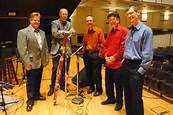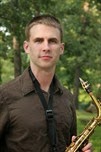Two popular Russian masterpieces constitute Indianapolis Symphony Orchestra's second midwinter festival program

With the music director taking off the middle week of "Fantasy, Fate and War: A Midwinter Russian Music Festival," a near-exact contemporary of his mounts the podium of the Hilbert Circle Theatre to conduct works by Prokofiev and Tchaikovsky. Han-Na Chang makes her ISO debut. Han-Na Chang is also a colleague of Krzysztof Urbanski's on the artistic side of the Trondheim (Norway) Symphony Orchestra. After making a sensation as a precocious concert cellist, the South Korean musician switched to conducting in her late teens, and most of the 32-year-old maestra's career has been devoted to wielding the baton. Since last season, Chang has been principal guest conductor at Trondheim, where Urbanski was appointed chief conductor in 2010. On Friday night, Chang made her Indianapolis Symphony Orchestra debut. She showed herself to be a thoroughly schooled conductor with pinpoint control over what the musicians in front of her were doing. In Tchaikovsky's Symphony








